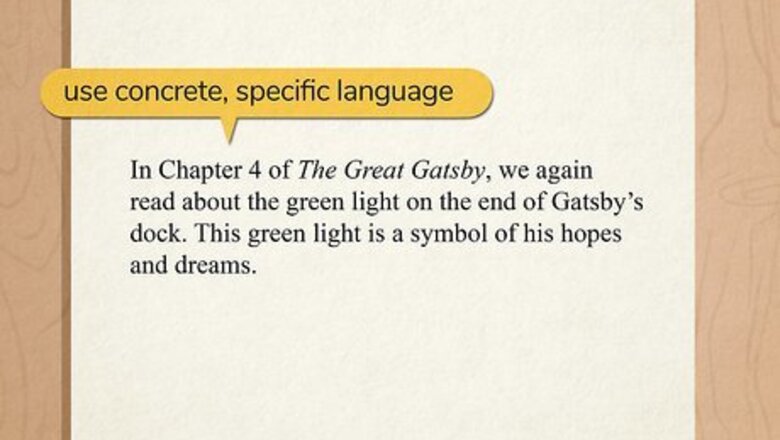
views
The Basics
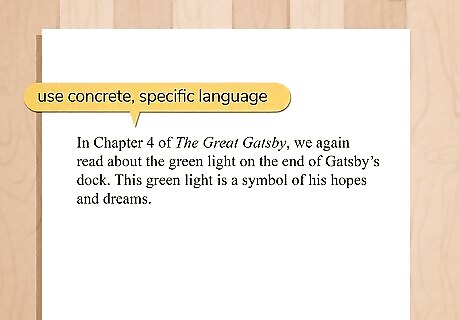
Use concrete, specific language to make your points clear. You want to make sure that your examples help you to support your thesis statement. The best way to do this is to talk about specific ideas, people, and things, rather than making broad generalizations. If you're writing a descriptive essay, use sensory imagery so the reader can see what you see and feel how you feel. Don’t write something like, “It seems like colors and lights in Gatsby mean important things.” Instead, try saying, “In Chapter 4 of The Great Gatsby, we again read about the green light on the end of Gatsby’s dock. This green light is a symbol of his hopes and dreams.”
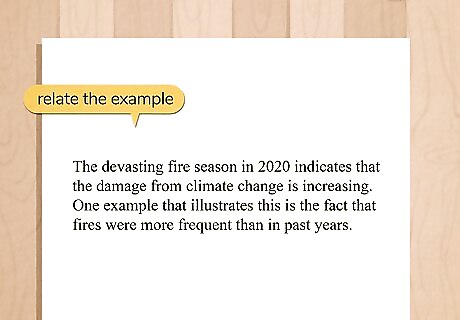
Explain how the example supports your claim. While you understand why you chose each example, your reader might need you to connect the dots for them. For each example, make sure to clearly state how the example relates to your point. You might be able to do this in a sentence or two, or you may need a few paragraphs. If you want to use wildfires in California as an example of damage from climate change, you could write something like, "The devastating fire season in 2020 indicates that the damage from climate change is increasing. One example that illustrates this is the fact that fires were more frequent than in past years."
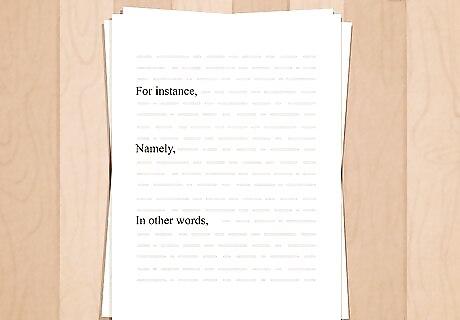
Include multiple examples to make your argument even stronger. For each main point in your essay, try to use 2-3 examples to back it up. That will help the reader understand the importance of your point. It also shows that you have done your research! You could discuss 3 different times that the green light was mentioned in Gatsby and analyze each one.
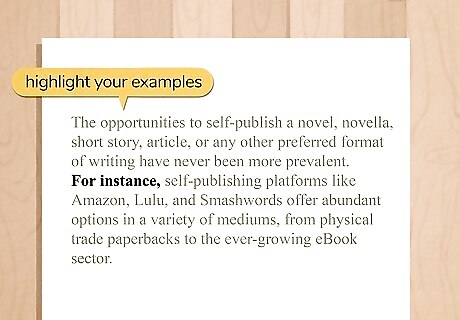
Highlight your examples using different phrases. It’s going to get pretty boring if you have to keep writing “For example…” Vary your word choice to keep your reader interested and to make your paper flow smoothly. Try using these phrases: For instance Namely In other words In particular Such as
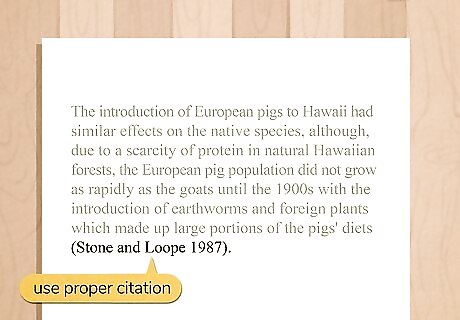
Add citations and quotation marks as necessary. It's really important to document the sources where you found your examples. This shows that you are giving the proper credit. The citation style you use will vary according to what your instructor wants. Ask them (or read the instructions) to find out if you should use MLA, APA, or Chicago citations. If you're using a direct quote, don't forget to use quotation marks to offset the quote. Make sure to introduce or conclude your quote. For instance, write, "As Baker explains, 'Wildfires have increased significantly during the past year." Or, "'Wildfires have increased significantly during the past year,' according to Baker." Whether you use parenthetical documentation or endnotes or footnotes depends on which citation style you use. Ask your instructor for tips if you're not sure how to cite materials.
Types of Examples

Include quotations as examples when the author says it best. Most of your paper should be written in your own words. But sometimes you just can’t say something better than the author already said it. In that case, quotes can serve as great examples to make your essay stronger. For example, if you are trying to describe the Valley of Ashes in Gatsby, you could use a quote from the author’s description to help illustrate your point. You might write, "In Chapter 2, Fitzgerald paints the picture he wants the reader to see by saying, 'This is a Valley of Ashes—a fantastic farm where ashes grow like wheat into ridges and hills and grotesque gardens...'" Just make sure to cite any direct quotes or facts.
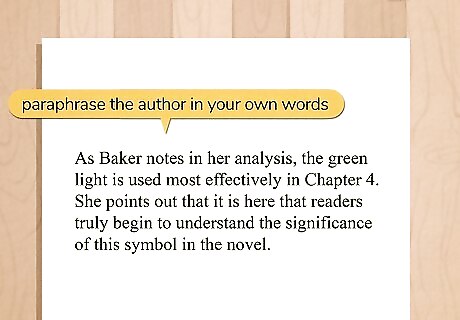
Paraphrase when you want to make the point in your own words. This is a great way to cite an example when you don’t want to use a direct quote. To paraphrase, sum up the point that the author uses in your own words. Make sure to cite the author that you are paraphrasing. It’s not just direct quotes that need citations. Maybe you are reading a journal article about symbolism in The Great Gatsby and want to discuss an example from that article. You could write something like, “As Baker notes in her analysis, the green light is used most effectively in Chapter 4. She points out that it is here that readers truly begin to understand the significance of this symbol in the novel.”

Use statistics or data when a hard fact is necessary. If you’re working on an essay for a more data-driven topic, use facts as examples when you can. After you share the data, explain why it is a useful example. For example, you could write something like, “It’s clear that voter registration in Nebraska has increased since 2016. In that year, 200,000 new voters registered, compared to 275,000 new voters in 2020. This is an example of how more people are engaging in voting.” Make sure to cite any data that you use.
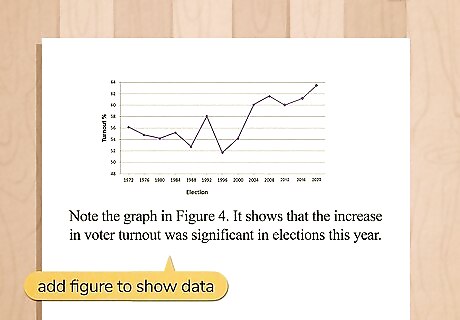
Add a figure when you want your reader to visualize your data. Sometimes it might help to actually show your reader what you want them to understand. If that's the case, you can use a graph, chart, table, or image as an example. All of these are commonly referred to as "figures." You can copy and paste and image and insert it into your paper. Make sure to direct your reader to the figure and explain what you want them to see. Write something like, "Note the graph in Figure 4. It shows that the increase in voter turnout was significant in elections this year." Don't forget to cite the source of your figures.




















Comments
0 comment